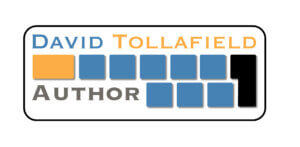A New Series in Three Parts – Introduction
The Physician’s Approach to Your Health Problem
Author and former consultant podiatric surgeon will explore the essentials of the clinical examination and its implications for patients.
- Have you ever wondered what goes through the mind of the person you seek help for your health problem?
- Why are they asking those questions?
- Why are specific questions asked, and is the doctor or clinician listening to you?
- Does he or she reach for the prescription pad, write, or type, seeming to be distracted?
- We have all had good and bad experiences. Still, whether you seek a medical opinion or one from another specialist, there is a system that might seem arcane, hidden away, and inaccessible.
Why would a podiatrist know about medical examinations?
Teaching medicine to students and then training people to be foot surgeons allowed me to embrace the world of medical examination. Much of my training came from an undergraduate degree covering the anatomy and physiology of the major systems–heart, lungs, and brain. Our medical professor taught hands-on listening to the heart and lungs, a process called auscultation. I then became adept at taking blood pressure with a traditional sphygmomanometer, which was put to good practice when I was privileged to spend time in a US hospital. The clinical examinations, called history and physicals, were performed and included all the systems from head to toe, with the exception of internal examinations. I used ophthalmoscopes to look at retinas and auroscopes for the ear canals, and I learned how to test the cranial nerves. The stethoscope’s purpose opened my eyes to the fact I could do more than look at foot health; after all, our feet are connected to the rest of the body systems and so are integral.
Following a house officer at our local hospital allowed me to gain further knowledge of how an A&E service works. When I decided all trainees should be exposed to advanced resuscitation, we ran the first course at our hospital, which extended our knowledge into emergency care and methods of understanding the heart in distress. I devoured clinical examinations with lecture slides, papers and books on the technique. Much of this was not included in our training at the time in the seventies and eighties.
My early days as a specialist included taking a complete history and examination (H&P) to become fluent in the method, and I wanted my trainees to follow this pattern of approach. In the UK, H&P is called clinical clerking, a rather prosaic term steeped in good practice, while H&P is rather more definitive. Missing medical conditions were not ideal, and many years later, I diagnosed a nurse who had Cushing’s syndrome, which all the medical consultants around had missed the obvious. Diagnosing hypertension and diabetes soon became an essential part of my approach to patient care before I set about any surgical management.
In these three articles, I wanted to share a little of the skills and knowledge that all clinicians are likely to use, whether as nurses, paramedics, physiotherapists, or podiatrists. Our role is to screen for disease and alert those who need to know to help patients. By sharing knowledge and teamwork, better health care can be delivered. Whether a patient or someone interested in the medical model of care, I hope these three articles offer some value. When asked to write a new book for the Institute of Podiatrists in 2023, I included a small chapter on history and recording for the clinician—An Introduction to the Foot.
The History & Physical (Clinical Clerking)
Comprising three distinctive parts, the clinician uses the five senses to guide the process–one might take the humourous view of Sherlock Holmes or Poirot in determining evidence from visual observation and verbal questioning. The first in the series covers observation as in the Physician’s Eye. Well-man and Well-woman clinics and those associated with obstetrics are not featured. I recommend starting with the ‘Eye’ first.
The Physician’s Eye – 17th February
The Physician’s Ear – 18th February
The Physician’s Touch – 19th February
Thanks for reading this brief introduction to the Clinical Visit. The information provided is not intended to offer any diagnosis, and specialist care may be required.
David R. Tollafield was a senior lecturer, researcher and clinician teaching surgical medicine and pathology as well as a consultant podiatric surgeon of over thirty years. He is the author of academic books and patient guide information. His author site can be reached by clicking here. Consultingfootpain is published by Busypencilcase Communications (BPCC) Est. 2015
Consultingfootpain is published by Busypencilcase Communications (BPCC) Est. 2015


Recent Comments